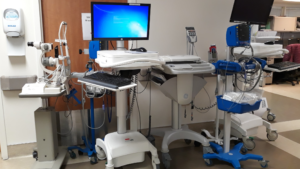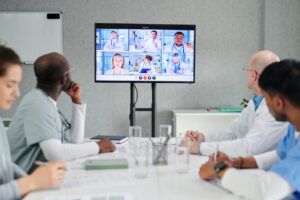
Why WiFi Assurance is Your Hospital’s Most Important Technology

Take a look around a hospital and it is easy to see how technology has transformed healthcare. From information and communication technology to patient and building IoT devices, providers and patients alike depend on internet-connected tools. In turn, these tools depend on the WiFi.
In the go-go-go environment of a hospital, it isn’t enough for apps and devices to have wired access to the network. Healthcare professionals need to be able to review data and coordinate care in real-time from anywhere. Patients need to remain monitored whether in their rooms or walking down a hallway. If the WiFi isn’t working, patients can suffer. That is why a WiFi Assurance platform is any hospital’s most important technology. These platforms ensure that the wireless network and all connected devices work in an optimal manner at all times.
The Wireless Intelligence Platform (WIP) is an award-winning, patented WiFi Assurance solution. It delivers:
- 90% faster Mean-Time-to-Resolution (MTTR)
- 80% fewer onsite troubleshooting visits
- 50% fewer problem WiFi tickets
Take a look at three specific ways that WIP makes a critical difference in healthcare.
Constant Monitoring Protects and Promotes Patient Care
Many medical IoT devices are specifically for patient monitoring. Some track vital signs like heart rate, blood pressure, and oxygen levels; others track patient location; some provide fetal and maternal monitoring; while still others provide continuous physiologic monitoring. The list goes on and on. It is vitally important that these monitors transmit data in real-time at all times. WIP proactively monitors network connections 24/7, ensuring that no interference or degradation prevents healthcare professionals from receiving the data they need to provide the best care.
If there are any issues or potential trouble spots, WIP alerts IT automatically, providing all pertinent details and actionable healthcare solutions for resolution. Armed with this knowledge, IT can more quickly move to problem resolution, preventing any issues from escalating and affecting end-users. For example, perhaps an access point (AP) temporarily and periodically stops transmitting, causing devices to disconnect for a few seconds or minutes. Rather than having to wait for the issue to happen again in order to capture the necessary data packets that will lead to problem identification and resolution, IT can trust in WIP to provide all relevant information directly after the first drop. Depending on the cause of the issue, WIP can even provide an alert of upcoming trouble before the issue ever occurs.
Complete Network Visibility Prioritizes Medical Devices
Hospital networks don’t only support medical devices. They support the cellphones of patients and guests; various wearables like watches and exercise devices; building devices like thermostats and security cameras; and many others. Obviously, not all devices are as important as life-saving medical devices, and it’s these devices that need bandwidth priority. WIP makes that prioritization easy with 100% visibility.
WIP identifies all connected devices and determines exactly the airtime utilization of each device. If there are issues, such as slow throughput, IT teams can use this visibility to clearly see if the problem lies with guests streaming movies and eating up the bandwidth, or if there’s a problem with a medical system. WIP’s complete visibility also supports IT in tracking which SSID devices are connected to, supporting network security and bandwidth prioritization in that regard as well.
Proactive Testing Reduces End-User Issues
WIP’s scheduled network tests are a way for IT teams to keep eyes on the network at all times. Tests can be scheduled to run every minute, every hour, or every day, and WIP automatically alerts IT if any test fails or falls outside its designated parameters. With this information, IT can quickly resolve issues with security features, applications, servers, throughput, and devices. In addition, the tests are remote capable, giving IT the ability to troubleshoot from any location.
Continuous, Reliable Care with Optimized Networks
Wireless ecosystems are just as complex and dynamic as the hospitals they support. Facing constant, varied demands from hundreds of thousands of connected devices, and possible interference from nearby networks as well as non-WiFi sources, like microwave ovens, the WiFi will not optimize itself. A non-optimized network is an unreliable network. With patients’ lives sometimes depending on WiFi-connected devices, an unreliable network is unacceptable.
Work with a WiFi Assurance platform like the Wireless Intelligence Platform to ensure that your wireless ecosystem provides flawless service, consistently and reliably.

